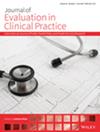Intravenous Medication Administration Errors in Hospitalised Patients: An Updated Systematic Review
Abstract
Background
Administering intravenous (IV) drugs carries a high risk of adverse effects due to their direct entry into circulation. Identifying the prevalence and types of IV administration errors and the drugs involved is crucial for implementing effective interventions to reduce such errors.
Aim
This systematic review aimed to examine and synthesise the available articles on medication errors involving IV administration in hospitalised patients.
Methods
A comprehensive search was conducted using electronic databases, including PubMed, Ovid Medline, and CINAHL. The search was performed without time limitation up to July 2023. However, only articles published in English and human subjects were included. The quality of the studies was appraised using the Newcastle-Ottawa quality assessment scale (NOS). This systematic review was registered with PROSPERO (CRD42023469352).
Result
Database searches yielded 2177 articles; after duplicate removal, 1717 underwent title and abstract screening, and 23 were included after full-text review. The studies were from 12 countries, and the multicentre study included countries from Europe, Africa, the Americas, Asia, and Australia. The majority of the studies were conducted in either teaching hospitals (n = 11) or university-affiliated hospitals (n = 7), with most involving direct observation (n = 21). IV administration errors exhibit a broad prevalence range of 5.0%−62.9%, involving various types such as wrong diluent, dose, route, rate, technique, omission, and timing. Studies lack uniformity in reporting, with some not specifying prevalence. The highest prevalence of specific errors varies across settings.
Conclusion
Our review highlights that IV medication error rates vary based on study design, setting, and population. Standardised definitions, reporting procedures, and reliable tracking methods are needed. Human factors, system issues, and environmental stressors influence medication errors. Future research must improve our understanding and address these factors to enhance patient safety and healthcare quality.


 求助内容:
求助内容: 应助结果提醒方式:
应助结果提醒方式:


